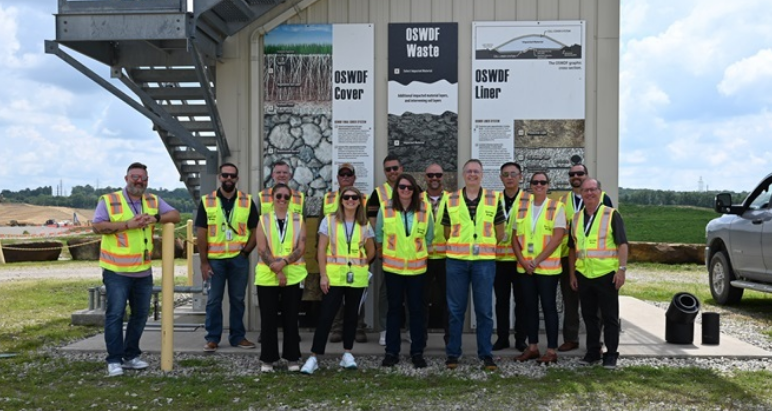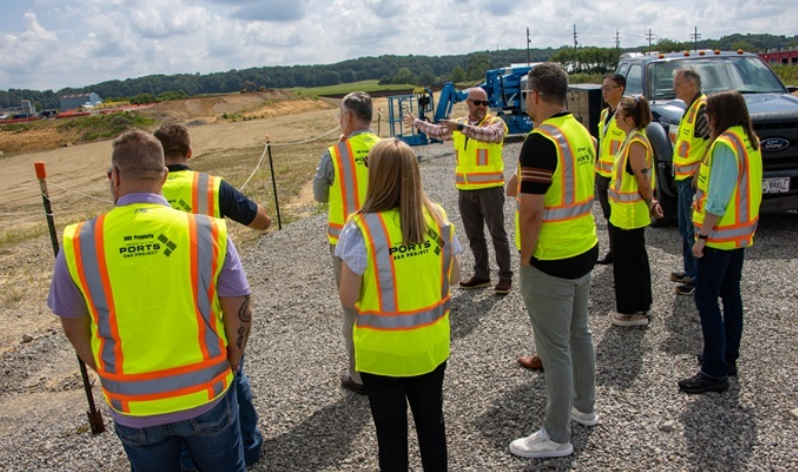
COLUMBUS, Ohio - Ohio is betting billions on a nuclear energy renaissance, creating the Ohio Nuclear Development Authority (ONDA) to spearhead a new generation of advanced reactors and radioactive waste storage. But as this powerful, state-backed entity prepares to guide Ohio's energy future, its controversial origins and the tangled interests of its board members raise the specter of a "FirstEnergy 2.0" scandal, where public policy could be shaped for private profit.
An Authority Born in Controversy
ONDA is no mere advisory panel; it is a market mover, empowered to direct massive public and private investments that will define Ohio's nuclear landscape for decades. The authority's decisions could generate billions in private profits, creating a powerful incentive for special interests to influence its direction.
The creation of ONDA itself is a red flag for transparency advocates. The proposal failed to pass as a standalone bill three times between 2018 and 2023. It was ultimately tucked into a massive, 5,000-page state budget bill (House Bill 33), securing its existence and an initial $750,000 in funding without facing direct legislative debate on its own merits. This legislative maneuver, championed by figures like Representative Dick Stein (R-District 54), has fueled concerns about whether an entity with such a vast mandate has received adequate public scrutiny.
As established by the Ohio Revised Code, Chapter 4164, ONDA members are appointed by the governor with input from industry groups. While the Ohio Department of Development is tasked with overseeing its performance and expenditures, the authority's fundamental structure raises serious questions about whose interests will truly be served.
A Web of Potential Conflicts
While many ONDA appointees declared "no conflicts of interest" on their applications, a closer look reveals a web of connections to the very industries ONDA is meant to oversee.
Steven A. Moore: The Industry Insider
Steven A. Moore, an ONDA board member from the "Industry" committee, is deeply embedded in the nuclear cleanup and waste management sector. As the CEO of Veolia Nuclear Solutions - Federal Services and former head of Wastren Advantage, Inc. (WAI), his professional life revolves around the exact issues ONDA will influence.
Moore's connections run even deeper in Piketon, Ohio, home of the former Portsmouth Gaseous Diffusion Plant. He is a major property developer in the area, and his private foundation, The Steven and Jennifer Moore Foundation, helped fund the acquisition of the notoriously contaminated Zahn's Corner Middle School by a religious organization. The school is known to be riddled with enriched uranium and neptunium-237, and the community has faced health crises, including childhood cancers linked to the nearby nuclear plant.
This overlap of roles is alarming. When a board member whose companies stand to profit from nuclear cleanup is also involved in property deals concerning contaminated sites, it begs the question: is ONDA's mission public service, or private opportunity?
Dr. Lei Raymond Cao: The Academic Architect
Dr. Lei Raymond Cao, a professor in Ohio State University's Nuclear Engineering Program and Director of its Nuclear Reactor Laboratory, brings a different but equally significant connection. ONDA is mandated to foster a nuclear research and development program in Ohio—a goal that aligns perfectly with Dr. Cao's work.
While not a direct financial conflict, his position gives him immense influence over which research priorities, university partnerships, and workforce development programs receive state support. This creates a powerful nexus between state policy and academic interests that warrants careful scrutiny to ensure public research funds serve the broadest public good, not just specific institutional goals.
Following a recent tour of the Portsmouth Site, Dr. Cao stated, "It's a powerful example of how long term vision and sustained investment can turn legacy nuclear sites into opportunities for regional revitalization.”
Other Members and Systemic Risk
Other ONDA board members include Alicia Walls (a Nuclear Criticality Safety Engineer from Pike County), Mark (Andy) Miller (Cleveland Clinic), Michael J. Snee (Conference of Radiation Control Program Directors), and Dr. William H. Thesling (Viasat, Inc.). While no direct controversies have been linked to them, their self-declarations of "no conflicts" are only a starting point. The reliance on industry input for appointments and the explicit inclusion of industry members create systemic vulnerabilities. The lines between promoting public welfare and advancing private business models are inherently blurred.
A Familiar Tune: Echoes of the FirstEnergy Scandal
The structural flaws within ONDA are chillingly similar to the conditions that led to the FirstEnergy bribery scandal, which saw millions funneled to politicians to secure a billion-dollar bailout for two nuclear plants.
-
Massive Financial Stakes: Billions of dollars are on the line, creating immense pressure for private interests to influence policy.
-
Controversial Legislative Path: ONDA’s passage through a budget bill, after failing on its own, mirrors the back-room dealing concerns that plagued the FirstEnergy bailout.
-
Concentrated Influence: Individuals with deep personal and financial stakes in the nuclear industry hold powerful positions within ONDA.
-
Transparency Gaps: The system relies on self-disclosure of conflicts, leaving a gaping hole for potential abuses of power.
The warning signs are blinking red. While ONDA's recent visit to the Portsmouth Site was framed as a collaborative step toward "reindustrialization" and a "new nuclear industry in Ohio," the fundamental questions about its integrity remain. Ohio's current oversight mechanisms may not be strong enough to prevent another scandal. Without rigorous, independent scrutiny, ONDA's promise of a bright nuclear future could be overshadowed by the grim reality of "FirstEnergy 2.0."

Add comment
Comments